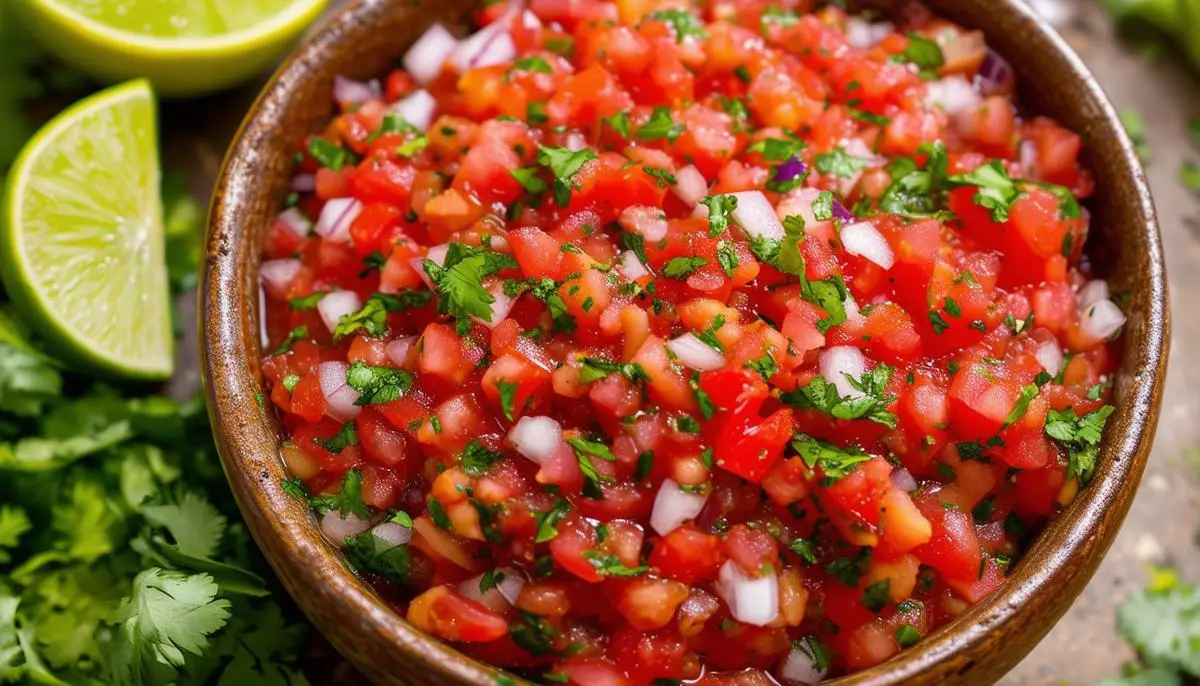
Historical Significance of Tepin Chili
Tracing its roots to Mexico, the Tepin chili holds a revered position in agricultural history. Known as the ‘Mother of All Peppers’, this tiny power-packed fruit has been the cornerstone of culinary and cultural development across the Americas.
The word ‘Tepin’ stems from the Nahuatl language of the Aztec civilization, translating to ‘little one’ or ‘flea’, aligning with its small size yet significant impact. As a wild pepper, it thrives across various regions, including Arizona, Texas, New Mexico, and Mexico. Botanists believe it is the likely ancestor of all domesticated chili varieties today.
Wild birds play a pivotal role in the dispersal of Chiltepin seeds, creating an interesting narrative of ecological interdependence. These birds, immune to the chili’s heat, consume the fruits and transport the seeds great distances, inadvertently cultivating new pepper patches far from the mother plants. This pepper’s seed-distribution method is a prime example of natural symbiosis.
Tepin chilies also hold a profound place in Native American heritage. For these cultures, Chiltepins were deeply embedded in daily life and rituals. Used both as a food and medicine, these peppers were integral to diet, known for their flavor and purported therapeutic properties. Celebrations and tribal ceremonies often incorporated Tepin chilies, symbolizing strength and endurance, reflecting the physical effects of its consumption and spiritual beliefs.
Archaeologists and anthropologists believe that the ancient use of these chilies contributed to social structures and migration patterns. Territories rich in native Tepins may have been pivotal in ancient settlement decisions due to their importance in diet and medicine.
The Tepin chili’s journey through time and culture highlights its status as a culinary staple and cultural icon, entwined with the evolution of societies in the Americas. Their continued growth in the wild and enduring popularity in culinary applications today speaks to their historical and ongoing significance.

Culinary Uses and Heat Profile
Renowned for scores ranking between 50,000 and 100,000 on the Scoville scale, Tepin chilies are notable for their fiery warmth. Falling between the heat of cayenne and habaneros, the Tepin delivers a sudden launch of heat, intense and momentarily seizing the senses, with hints of pleasure amidst the fire.
Beyond the initial blaze, Tepin chilies offer remarkable flavor complexities that anchor them in diverse cuisines. Emerging from traditional Mexican gastronomy, these chilies have ventured forth through natural means and human cultural exchange. In Mexican kitchens, Tepins are crushed fresh over hearty soups and stews to add flavor and encourage spirited interaction around the dinner tabFresh lime juice makes Tepin spectacular in salsas, creating potent contrasts to the savory coolness of cooked black beans.ans.
In contemporary cuisine, culinary innovators treasure Tepin chilies for their quick punch, offering a brief, vivid gustatory experience without sustained assault on the senses. Modern chefs employ Tepin in minimal, strategic quantities to elevate complex dishes. They might infuse oil with Tepin to artistically drizzle atop delicate ceviche or enliven a plate of single-origin chocolate desserts, showcasing how a surge of heat can flatter subtler flavors.
Science illuminates the kinetic dance that capsaicin, the active component in chilies, engages with our taste receptors. Upon consuming Tepin, human receptors trigger to alert us of this ‘burning’, jolting neural pathways with signals of fiery distress. Despite minimal actual harm, the reaction mimics thermal fury, potentially eclipsing milder flavors temporarily. Interestingly, the sensory mechanics evolve after repetitive exposure; ‘desensitization’ can occur, whereby frequent diners of fiery foods demonstrate slower reaction times to spiciness and an apparent enhanced robustness.
Accompanying the empirical evidence are anecdotes illustrating humanity’s playful duel with this distinct ‘heat’. Global gourmands share stories of their first, painful experience with the tepin’s sting and the sweet relief that followed. Although physically intense, this combination of caffeine-like jitteriness followed by dopamine-led euphoria crafts a layered experience that tantalizes as much as it tests.
The Tepin chili endures as an ingredient and culinary emblem, offering continuous exploration across seasoning spectrums and time. Gripping every seasoned aspiration it encounters with fiery kisses, the Tepin bears its culinary torch profoundly forward.

Health Benefits of Tepin Chili
Though small in size, the Tepin pepper holds a grand cache of health benefits. Scientific inquiry highlights this fiery fruit’s impressive antioxidants, robust stores of vitamins, and the medicinal applications of capsaicin.
Foremost among Tepin’s accolades is its considerable content of antioxidants. These natural compounds perform crucial roles, neutralizing free radicals that can damage cells and contribute to chronic illnesses and aging. Studies indicate that antioxidants like provitamin A and carotenoids, which Tepins house heartily, contribute to fortifying the body’s defenses against some forms of cancers by hindering the growth of malignant cells.1 Additionally, these composites are recognized for their anti-inflammatory properties, reducing the strain of chronic ailments and supporting overall wellness.
Tepins are also well-stocked with essential vitamins, notably vitamin C and E, contributing to immune system empowerment and overall cellular health. Capsicum annuum var. Tepin brings forth these powerful vitamins in impressive quantities compared to other members of its species.2 Regular consumption can supercharge your vitamin intake, providing notable percentages toward daily recommended values. These vitamins also enable iron absorption from other foods, an indispensable synergy for blood health.
Capsaicin, the fiery soul of the Tepin, is a proven metabolism booster. It incites gastrointestinal activity that may enhance calorie and fat burning.3 Published studies have highlighted this rare quality as a contributor to weight management goals and fighting obesity.
Moreover, capsaicin introduces welcome news for those struggling with Type 2 diabetes, stimulating beneficial effects on blood glucose level regulation.4 Regular doses can facilitate an overall harmonious internal environment that tackles high sugar and fat discomforts.
Several in vitro studies also emphasize Tepin’s potential anti-carcinogenic attributes driven primarily by its capsaicin content.5 These studies highlight Tepin extracts’ capability to potentially interrupt cancerous cell cycles or propagate apoptosis (cell death) in certain tumor models.
Tepin chilies have many health benefits, such as improving your diet, preventing disease, and helping your body’s biochemicals work better. They are a revered botanical treasure trove that comes in small packages but has many benefits for your body. Scientific endorsement wrapped around this wild fruit entices one to consider integrating such fiery agents into meal patterns, promising not just vibrant flavors but robust health reinforcements worthy of regular inclusion in any culinary collaboration seeking future lengthening and present mending of life’s treasured biological tapestry.
- Guzman I, Hamby S, Romero J, Bosland PW, O’Connell MA. Variability of carotenoid biosynthesis in orange colored Capsicum spp. Plant Sci. 2010;179(1-2):49-59.
- Antonious GF, Jarret RL. Screening Capsicum accessions for capsaicinoids content. J Environ Sci Health B. 2006;41(5):717-729.
- Whiting S, Derbyshire E, Tiwari BK. Capsaicinoids and capsinoids. A potential role for weight management? A systematic review of the evidence. Appetite. 2012;59(2):341-348.
- Chaiyasit K, Khovidhunkit W, Wittayalertpanya S. Pharmacokinetic and the effect of capsaicin in Capsicum frutescens on decreasing plasma glucose level. J Med Assoc Thai. 2009;92(1):108-113.
- Clark R, Lee SH. Anticancer properties of capsaicin against human cancer. Anticancer Res. 2016;36(3):837-843.



